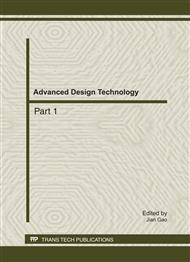p.2358
p.2364
p.2368
p.2374
p.2379
p.2384
p.2388
p.2393
p.2398
Study of the Injury Analysis and Safety Design Improvement of the Bus in the Typical Position
Abstract:
In emergency braking conditions, because of a large acceleration, the passenger will lose his balance to come in collision with the bus bodywork. In some typical positions, without the side effect of seat belts or baffle, the key parts of a passenger body will come in direct collision with the bodywork internal, even to be accompanied with secondary collision, which causes a great threat to human’s life safety. This paper cares for the front bus position. Based on the collision simulation between the model of child passenger and the bodywork structure, by analyzing the initial point of impact, secondary point of impact and other key information, and combining the damage indicators-time curve of the collision of the dummy model which determines the peak injury index of a passenger, the injury in emergency braking situations can be simulated. According to the pattern and level of injury imposed on the body of a child, an improvement can be proposed for the design of the internal structure of the bodywork. The simulation after improvement of design shows that the head HIC value of a child dummy has a great reduction compared with before. So this improvement can fully reduce the risk of injury of children passengers.
Info:
Periodical:
Pages:
2379-2383
Citation:
Online since:
August 2011
Authors:
Keywords:
Price:
Сopyright:
© 2011 Trans Tech Publications Ltd. All Rights Reserved
Share:
Citation:


